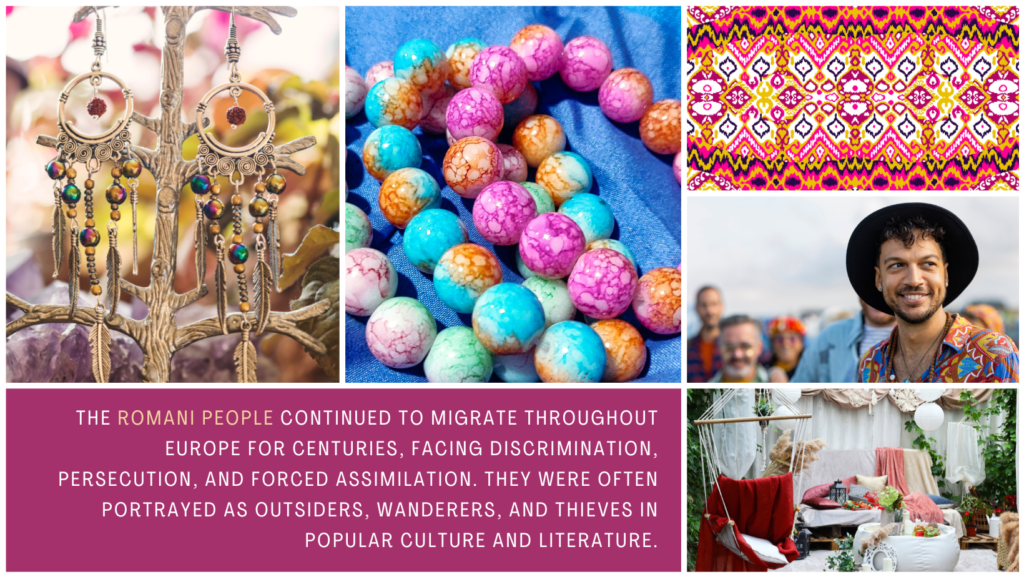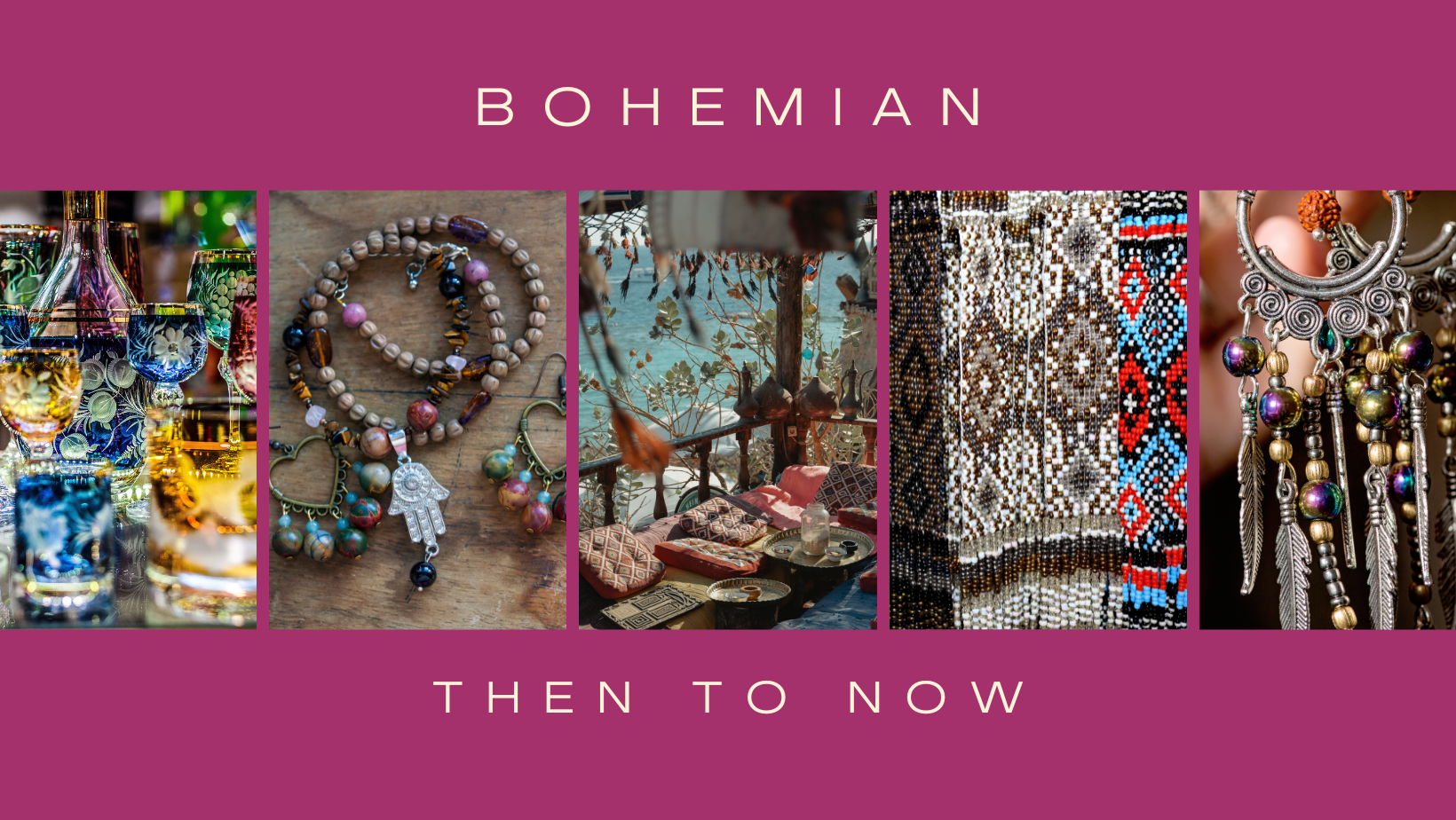Bohemian style is a unique and eclectic fashion trend that has been popular for centuries. The term “bohemian” originally referred to the Romani people of Bohemia, a region in the present-day Czech Republic. However, in the 19th century, the term began to be used to describe artists, writers, and intellectuals who lived unconventional, often nomadic lifestyles and rejected the bourgeois values of the time.
These bohemians sought to create a new kind of art and literature that was free from the constraints of traditional forms and conventions. They were inspired by the Romantic movement, which emphasized emotion, individualism, and a connection with nature. Bohemian style was a reflection of this unconventional, creative lifestyle. Bohemians rejected the formal, restrictive clothing of the time and instead opted for loose, flowing garments that allowed for freedom of movement. They also favored bold, eclectic combinations of colors, patterns, and textures.
The Romani people, also known as Roma or Gypsies, have a long and complex history that spans across Europe and beyond. They originated from the Indian subcontinent and migrated to Europe around the 11th century. Throughout their history, the Romani people have faced discrimination, persecution, and forced assimilation. They were often portrayed as outsiders, wanderers, and thieves in popular culture and literature.
But, let’s go back – way back!
The origins of the Romani people can be traced back to the Indian subcontinent, specifically to the northwestern regions of present-day India and Pakistan. Linguistic and genetic evidence suggests that the Romani people originated from the Doma, a caste of musicians, dancers, and entertainers who were likely of low social status.
The Doma were a nomadic people who traveled throughout the Indian subcontinent, performing their services at various events and gatherings. Around 1,500 years ago, a group of Doma left India and began to migrate westward, eventually reaching the Middle East and Europe.
The reasons for this migration are not entirely clear, but it is believed that the Doma were seeking better economic opportunities and escaping persecution in India. As they traveled, they encountered various cultures and civilizations, and their language, customs, and traditions evolved and adapted to their new environments.
The Romani people continued to migrate throughout Europe for centuries, facing discrimination, persecution, and forced assimilation. They were often portrayed as outsiders, wanderers, and thieves in popular culture and literature. Despite these challenges, the Romani people have maintained a rich and vibrant culture that is characterized by their music, dance, and colorful clothing. They are also known for their skill in crafting intricate jewelry, textiles, and other decorative objects.
Today, the Romani people are estimated to number around 12 million worldwide, with the largest populations in Europe. Unfortunately they continue to face discrimination and marginalization in many parts of the world, but efforts are being made to recognize and celebrate their contributions to global culture and history.

The Merge and Influence
Bohemians in the 19th century were drawn to the Romani people and their unconventional, nomadic lifestyle. They saw in the Roma a kindred spirit, a group of people who rejected the mainstream values of the time and lived according to their own rules.
Bohemians adopted elements of Romani fashion, such as layered skirts, scarves, and bold jewelry, and incorporated them into their own eclectic style. They also drew inspiration from Romani music and dance, which emphasized improvisation, emotion, and a connection with the body.
Today, bohemian style is still popular, with a more modern, eclectic twist. The boho aesthetic is often characterized by a mix of vintage and contemporary pieces, as well as a global, nomadic influence. Bohemian style is also closely tied to the sustainability and ethical fashion movements, with an emphasis on natural, organic materials, fair trade practices, and artisanal craftsmanship.
Sources
- “Bohemianism.” Encyclopedia Britannica. https://www.britannica.com/art/Bohemianism
- “Bohemian Style: A History.” The Culture Trip. https://theculturetrip.com/articles/bohemian-style-a-history/
- “The History of Bohemian Fashion.” Love To Know. https://fashion.lovetoknow.com/wiki/History_of_Bohemian_Fashion
- “The Evolution of Bohemian Style.” The Huffington Post. https://www.huffpost.com/entry/the-evolution-of-bohemi_b_6937208
- “Bohemian Fashion: What It Is and How to Wear It.” The Good Trade. https://www.thegoodtrade.com/features/bohemian-fashion
- “Romani People.” Encyclopedia Britannica. https://www.britannica.com/topic/Romani
- “Gypsy History and Culture.” National Geographic. https://www.nationalgeographic.com/culture/gypsy/
- “The Romani People: A Brief History.” Amnesty International. https://www.amnesty.org/en/latest/campaigns/2017/04/roma-brief-history/
- “Romani Music and Dance.” The Metropolitan Museum of Art. https://www.metmuseum.org/toah/hd/roma/hd_roma.htm
- “Romani People.” Encyclopedia Britannica. https://www.britannica.com/topic/Romani
- “Gypsy History and Culture.” National Geographic. https://www.nationalgeographic.com/culture/gypsy/
- “The Romani People: A Brief History.” Amnesty International. https://www.amnesty.org/en/latest/campaigns/2017/04/roma-brief-history/
- “The Origins of the Romani People.” The Metropolitan Museum of Art. https://www.metmuseum.org/toah/hd/roma/hd_roma.htm
- “The Genetic History of the Romani People.” European Journal of Human Genetics. https://www.nature.com/articles/ejhg2012190
- “The Doma of India: A Historical and Ethnographic Study.” Asian Folklore Studies. https://www.jstor.org/stable/1177631

